
Question and Answers Forum
Question Number 144420 by ajfour last updated on 25/Jun/21
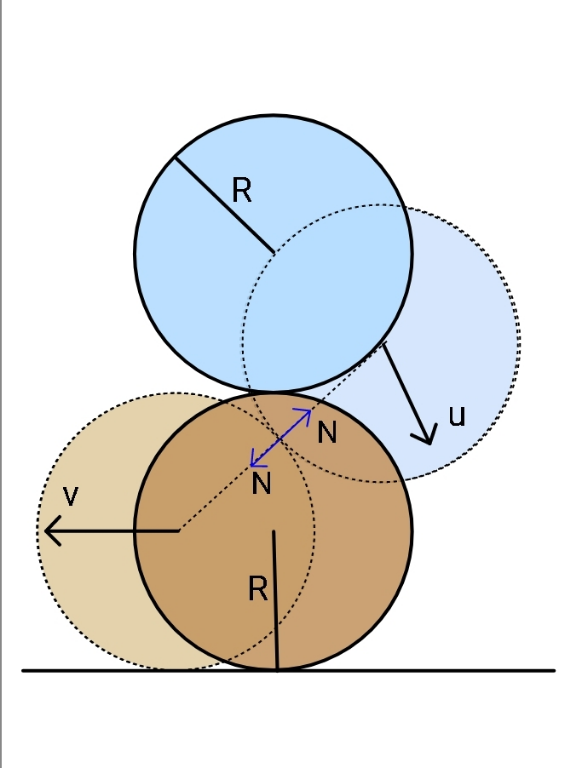
Commented by ajfour last updated on 25/Jun/21
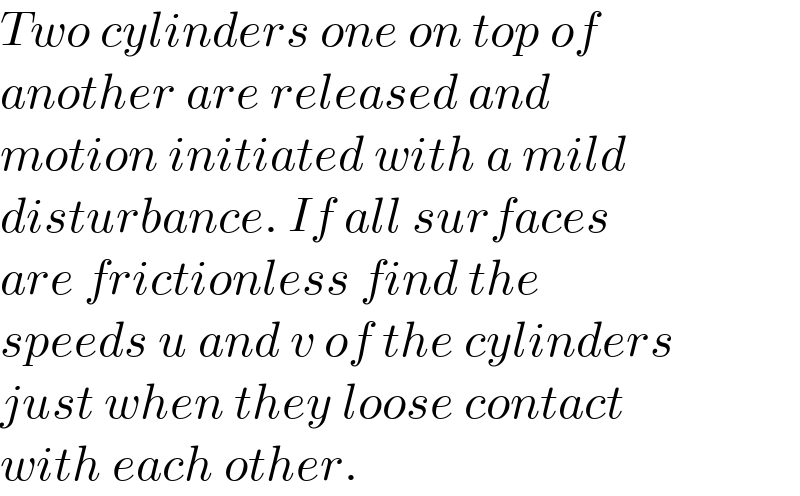
Answered by ajfour last updated on 25/Jun/21
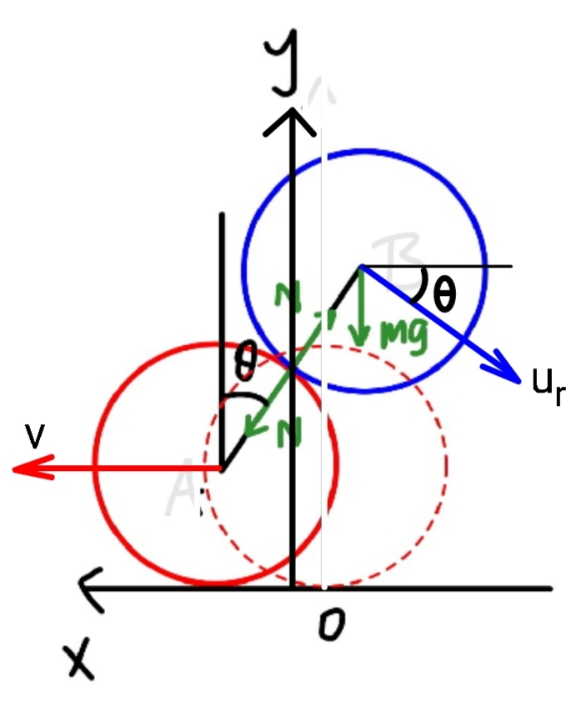
Commented by ajfour last updated on 25/Jun/21
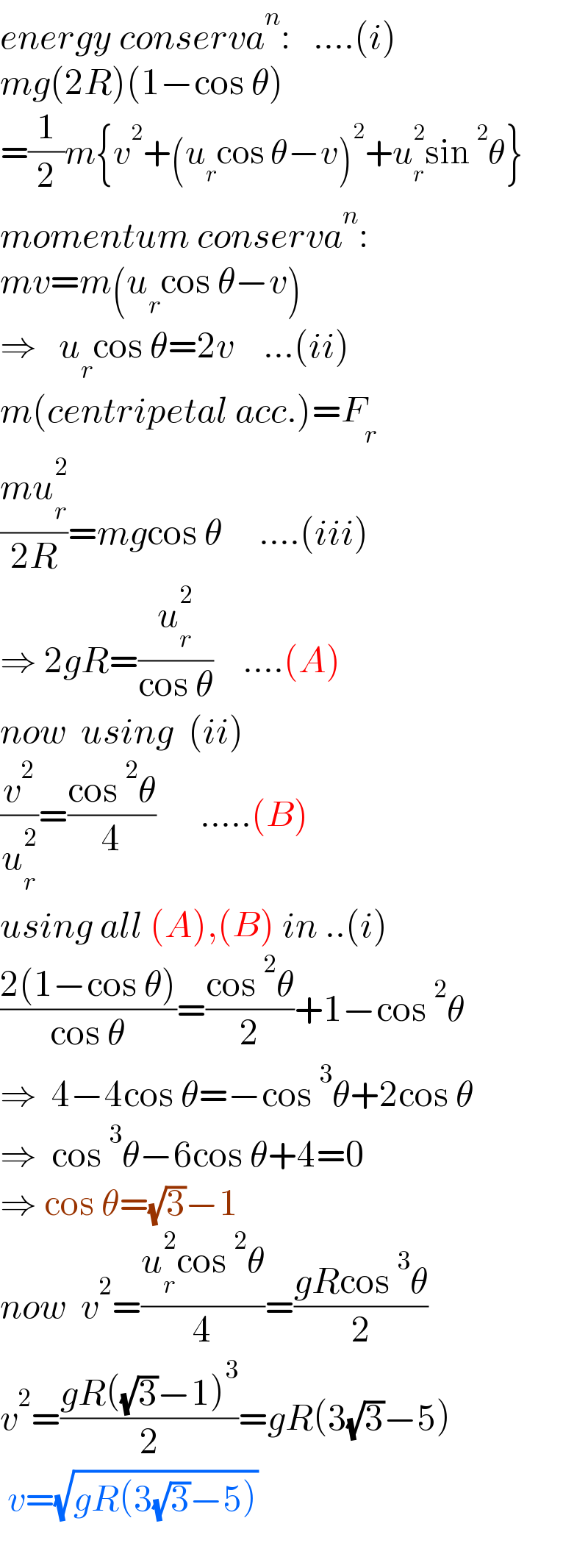
Answered by mr W last updated on 25/Jun/21
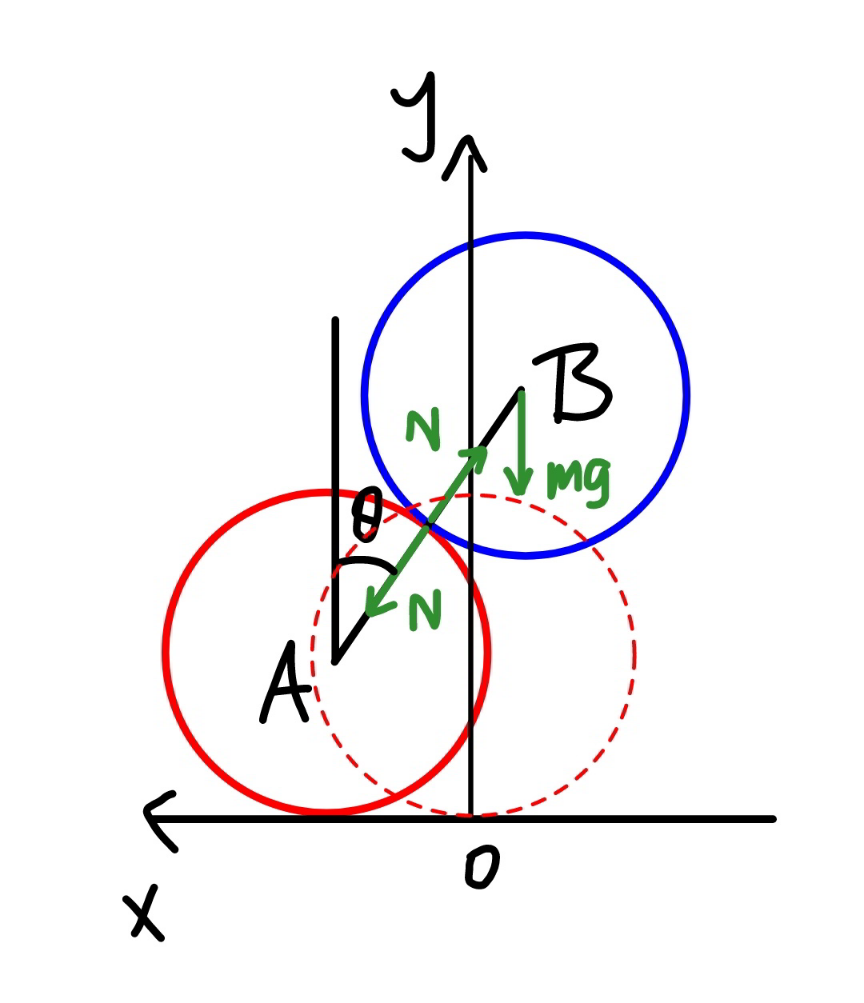
Commented by mr W last updated on 25/Jun/21
![x_B =x_A −2R sin θ y_B =R+2R cos θ ω=(dθ/dt) v=(dx_A /dt) a=(dv/dt) u_(Bx) =(dx_B /dt)=v−2R cos θ ω=−v ⇒v=R cos θ ω u_(By) =(dy_B /dt)=−2R sin θ ω (1/2)m(v^2 +u_(Bx) ^2 +u_(By) ^2 )=mg2R(1−cos θ) v^2 +(v−2R cos θ ω)^2 +(−2R sin θ ω)^2 =4gR(1−cos θ) R^2 cos^2 θ ω^2 +R^2 cos^2 θ ω^2 +4R^2 sin^2 θ ω^2 =4gR(1−cos θ) (1+sin^2 θ)ω^2 =2g(1−cos θ) ⇒ω^2 =((2g(1−cos θ))/(R(1+sin^2 θ))) ⇒ω=(√((2g(1−cos θ))/(R(2−cos^2 θ)))) 2ω(dω/dθ)=((2g)/R)[((sin θ)/(1+sin^2 θ))−((2sin θ cos θ(1−cos θ))/((1+sin^2 θ)^2 ))] ω(dω/dθ)=((g sin θ(cos^2 θ−2 cos θ+2))/(R(1+sin^2 θ)^2 )) a=(dv/dt)=Rω(−sin θ ω+cos θ (dω/dθ)) ma=Nsin θ N=0 ⇒a=0 −sin θ ω+cos θ (dω/dθ)=0 tan θ ω^2 =ω (dω/dθ)=((g sin θ(cos^2 θ−2 cos θ+2))/(R(1+sin^2 θ)^2 )) tan θ ((2g(1−cos θ))/(R(1+sin^2 θ)))=((g sin θ(cos^2 θ−2 cos θ+2))/((1+sin^2 θ)^2 )) ((2(1−cos θ))/(cos θ))=((cos^2 θ−2 cos θ+2)/(1+sin^2 θ)) ((2−2cos θ)/(cos θ))=((cos^2 θ−2 cos θ+2)/(2−cos^2 θ)) cos^3 θ−6 cos θ+4=0 (cos θ−2)(cos^2 θ+2 cos θ−2)=0 ⇒cos θ=(√3)−1 ⇒θ=cos^(−1) ((√3)−1)≈42.9° v= (√((2gR(1−cos θ)cos^2 θ)/(2−cos^2 θ))) ⇒v=(2−(√3)) (√(((√3)+1)gR))≈0.443(√(gR))](Q144472.png)
Commented by ajfour last updated on 25/Jun/21
Thanks Sir, right answer!
